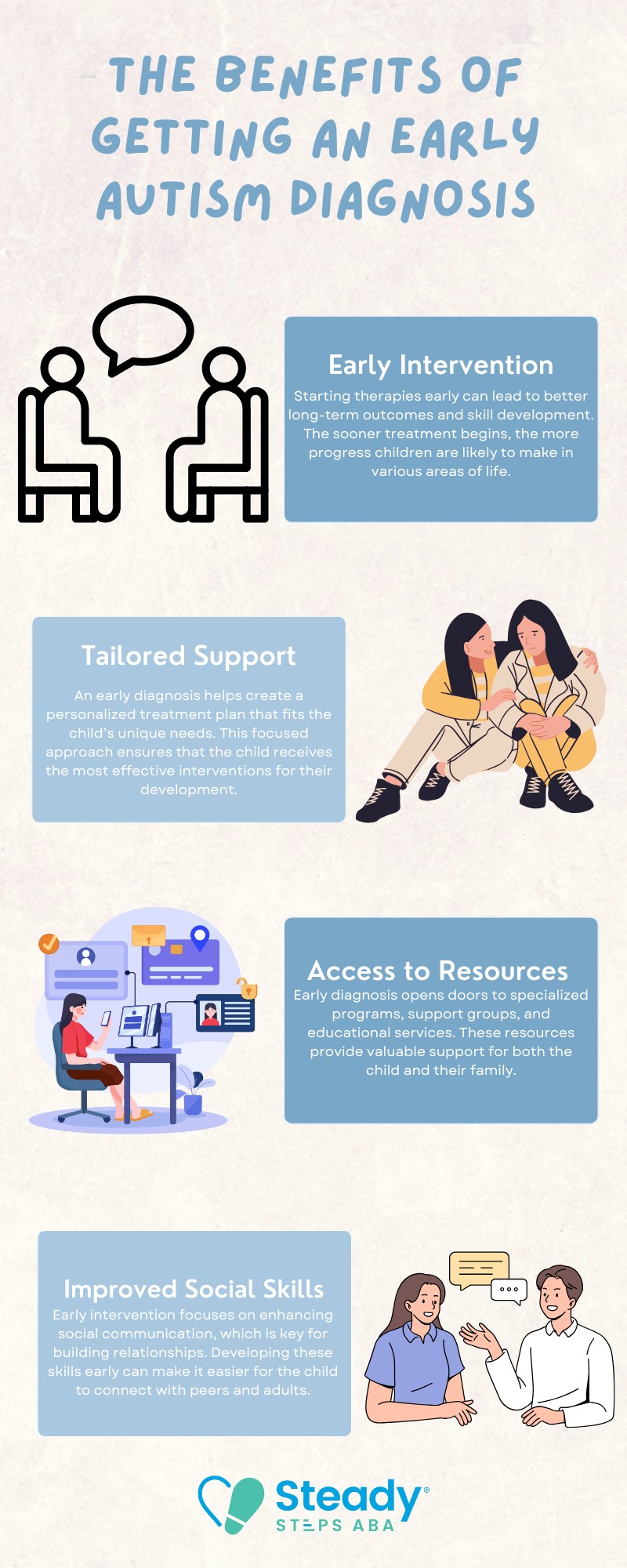Key Points:
- Autism Spectrum Disorder (ASD) treatments focus on improving communication, social skills, and behavior, but there is no cure for autism.
- Early intervention is key to helping individuals with ASD achieve their full potential.
- ABA therapy, along with other therapies like speech and occupational therapy, are commonly used treatments for autism.
Autism Spectrum Disorder (ASD) is a developmental disorder that affects children and adults in different ways. For instance, autism impacts social interaction, communication, and behavioral skills in diagnosed individuals. Because of this, one question many people ask is: What can cure autism?
Although there is no cure for autism, various treatments can help manage symptoms and improve an individual’s quality of life. These treatments typically focus on enhancing communication, social skills, behavior, and daily functioning. The most effective treatments vary depending on the age of the individual, their needs, and their specific challenges. For example, online support groups or a chat room dedicated to autism-related discussions can provide valuable resources and a sense of community for individuals and families navigating these challenges.
While there is no known cure for autism, effective therapies can help individuals with autism reach their full potential. The key is early intervention, which has been shown to significantly improve outcomes. In this article, we will explore the different treatments for autism and their effectiveness in helping individuals manage symptoms.
What Can Cure Autism?
The short answer to “What can cure autism?” is that there is no cure for autism. Autism is a lifelong condition that varies in severity and symptoms from person to person. While there is no cure, early intervention, and therapy can significantly improve an individual’s ability to manage the symptoms and thrive in various areas of life. Autism treatments focus on reducing the severity of symptoms, teaching essential skills, and providing support for both individuals and their families.
Instead of focusing on a “cure,” the goal is to provide individuals with autism with the tools and resources they need to navigate the world more effectively. Treatments such as ABA and occupational therapy are used to target specific areas of need and promote independence and growth.
Early Intervention for Autism Spectrum Disorder
Early intervention plays a crucial role in treating Autism Spectrum Disorder. The earlier a child is diagnosed and begins treatment, the more likely they are to develop important skills and improve their quality of life. Early intervention can help children develop communication, social, and behavioral skills that can carry them through childhood and into adulthood. By starting treatment early, children with autism are more likely to develop the skills needed to thrive academically, socially, and emotionally.

6 Common Treatments for Autism Spectrum Disorder
While there is no single treatment that works for every person with autism, various therapies have proven effective in improving specific skills and behaviors. The following treatments are among the most widely used:
1. Applied Behavior Analysis (ABA)
ABA therapy is one of the most widely recognized and evidence-based treatments for autism. It focuses on teaching specific behaviors and skills through positive reinforcement. ABA helps autistic individuals improve their social, communication, and daily living skills. The therapy is highly individualized, and therapists work closely with children and their families to create customized treatment plans.
2. Speech Therapy
Many individuals with autism have difficulty with communication. Speech therapy is a treatment designed to help individuals improve their ability to communicate effectively. This therapy can address issues such as speech clarity, language comprehension, and social communication skills. Speech therapists work with children to develop verbal and non-verbal communication skills.
3. Occupational Therapy
Occupational therapy helps autistic individuals develop the skills they need to thrive in everyday life. These can include tasks such as dressing, eating, writing, or using utensils. Occupational therapists also work on sensory processing issues, which are common in individuals with autism. Therapy sessions are tailored to meet the specific needs of each individual.
4. Social Skills Training
Individuals with autism often struggle with social interactions. Social skills training focuses on helping individuals with autism understand social cues, make eye contact, initiate conversations, and engage in appropriate social behaviors. Social skills groups can be especially helpful for children and teens with autism who need extra support in navigating social situations.
5. Cognitive Behavioral Therapy (CBT)
CBT is a form of therapy that focuses on identifying and changing negative thought patterns. It can help individuals with autism manage anxiety, stress, and other emotional challenges. CBT is particularly effective in treating co-occurring conditions like anxiety or depression, which are common among people with autism.
6. Medications
While there is no medication to cure autism, medications such as mood stabilizers may be prescribed to help manage specific symptoms. For example, medications can help address issues like irritability, anxiety, depression, or attention problems. Antidepressants, anti-anxiety medications, and antipsychotics are sometimes used as part of a comprehensive treatment plan.
The Role of Family and Support Systems in Treatment
Family support is vital when it comes to treating Autism Spectrum Disorder. Parents, caregivers, and family members often play an essential role in a child’s progress. They provide the stability and reinforcement needed to maintain the skills learned in therapy. Families are also key in helping individuals with autism navigate the challenges they may face in school, at home, and in social settings.
In addition to therapy, support groups and counseling for families can be beneficial. These groups offer a space for parents and caregivers to share experiences, ask questions, and learn from one another. They can also provide emotional support, which is essential for maintaining mental health when caring for a loved one with autism.
Why Early Diagnosis and Treatment Are Critical
The earlier autism is diagnosed and treatment begins, the better the long-term outcomes. Early diagnosis allows families to access the resources and therapies they need right away.
While there is no cure for autism, early intervention can greatly improve a child’s ability to function and interact with others. Families can also get involved in support networks that help them navigate the challenges of raising a child with autism.
Here are some benefits of getting an early autism diagnosis:

The Importance of Individualized Treatment Plans
Autism is a spectrum disorder, meaning that it affects individuals differently. The effectiveness of any given treatment depends on the individual’s unique needs. That’s why treatment plans for autism must be highly individualized. A personalized approach ensures that each child receives the care and attention they need to thrive.
An individualized treatment plan typically includes an assessment of the child’s strengths, challenges, and goals. From there, a team of therapists, doctors, and educators works together to design a plan that targets the child’s specific needs.
ABA Therapy: A Proven Approach
One of the most effective treatments for autism is ABA therapy. ABA stands for Applied Behavior Analysis, a therapy that uses scientifically proven techniques to teach and reinforce desired behaviors while reducing unwanted ones. ABA therapy is often tailored to fit the needs of each child, focusing on building skills such as communication, social interaction, and adaptive behavior.
ABA is highly structured, and therapists use reinforcement techniques to encourage positive behaviors. It can be used to teach a wide range of skills, from simple tasks like brushing teeth to more complex social skills, such as making friends or understanding social cues.
Maximize Your Child’s Success with ABA Therapy
If you’re seeking professional support for your child’s development, Steady Steps ABA is here to help. We specialize in ABA therapy in Maryland, providing personalized, evidence-based therapy designed to improve communication, behavior, and overall functioning for children with autism.
Our team of skilled therapists is dedicated to helping your child reach their full potential. Through ABA therapy, we work with families to create customized treatment plans that focus on your child’s unique strengths and challenges.
Contact us today to learn more about how ABA therapy can help your child thrive.



